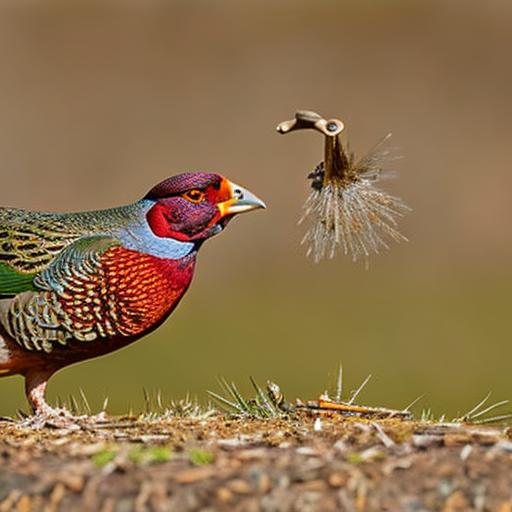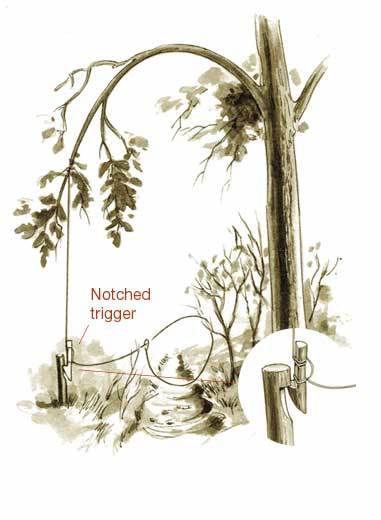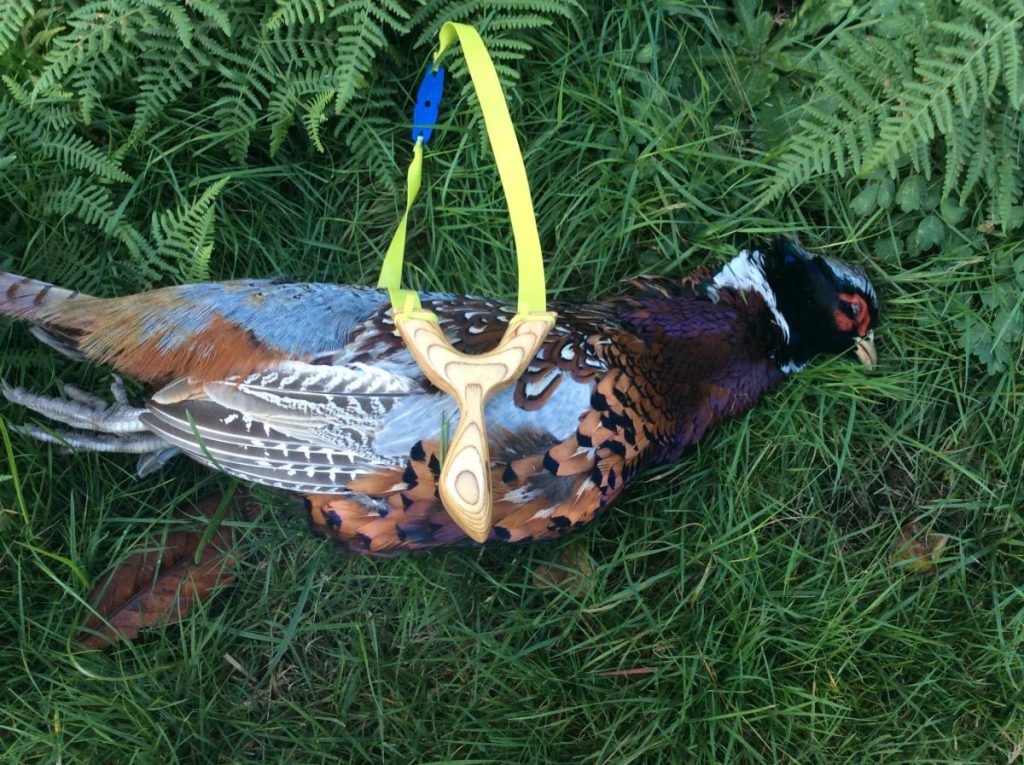Your cart is currently empty!

Think Guns are the Only Way? Think Again! How to Catch Pheasants Without One.

Table of Contents
Introduction
In the modern world of hunting, there’s an often unspoken assumption: if you’re serious about your sport, you rely on guns. But I’ve been in the hunting game long enough to tell you that this hasn’t always been the norm. History is filled with skilled hunters who knew how to catch pheasants without a gun, relying instead on their deep understanding of the natural world, innovative tactics, and tools that are as old as hunting itself. You see, hunting isn’t just about the act; it’s about the knowledge, the connection to nature, and the skill set you bring to the table. So, if you’ve ever wondered how to catch pheasants without a gun, you’re about to embark on a journey that will deepen your appreciation for the sport and broaden your horizons. Whether you’re a seasoned hunter looking for a new challenge or a novice eager to learn, there’s a world of knowledge waiting for you.
Understanding Pheasant Behavior
To truly excel at any form of hunting, especially when opting to catch pheasants without a gun, one must first understand their prey. Pheasants, like all creatures, have specific behaviors, habits, and patterns that can give a perceptive hunter the advantage.
Recognizing Signs and Patterns of Pheasant Activity in the Wild
Pheasants are ground-dwelling birds, primarily known for their keen senses. A seasoned hunter knows that to outwit these birds, you need to spot the signs of their presence and understand their daily routines. Start with looking for their tracks; they’re three-toed with a unique backward-pointing toe. Once you’re on their trail, be observant. Early mornings and late afternoons are prime times to spot pheasants as they’re actively foraging. This activity is punctuated by bouts of dust-bathing, which helps them rid their feathers of parasites. Look for small, bowl-shaped depressions in the dirt as an indicator of these dust baths.
Additionally, being social creatures, pheasants often communicate with soft clucking sounds, especially when they are feeding. This can be an auditory cue for the hunter. Moreover, they have a peculiar behavior of leaving behind ‘forms’ — these are essentially resting places in tall grasses or crops. If you come across an area where the grass seems flattened in an oval shape, chances are a pheasant had taken a rest there.
The Importance of Understanding Pheasant Behavior for Effective Non-Gun Hunting
When hunting without a gun, your strategy shifts. Instead of focusing on a clear shot, you’re looking for opportunities to either trap or approach the pheasant. And this is where your knowledge of pheasant behavior truly comes into play.
Firstly, understanding their feeding times allows you to set traps or position yourself effectively. If you’re aware of the routes they generally take, or the places they frequent, you can strategically place net traps or snares. This isn’t about luck; it’s about leveraging knowledge.
Secondly, knowing their behavior helps in stalking. Pheasants have an incredible sense of hearing and are always alert to potential dangers. If you understand their alert signals — a sudden, loud call, a raised head, or a fanned tail — you can adjust your approach, ensuring you remain undetected.
Lastly, understanding their behavior aids in ethical hunting. If you’re in this for the love of the sport and respect for nature, you want to ensure that any method you use is humane and causes the least amount of distress to the animal. By knowing their habits, you can reduce the chances of causing undue stress or harm.
Traditional Methods of Trapping Pheasants
The art of hunting goes back millennia, and while modern weaponry has its advantages, there’s something deeply satisfying about tapping into the ancient techniques our ancestors used. When it comes to catching pheasants without a gun, several traditional methods have stood the test of time. Let’s dive into some of these tried-and-true tactics.
Netting: Using Properly Sized Nets and the Right Technique for Trapping
Netting is one of the oldest hunting tools known to mankind. The key to using nets effectively for pheasants lies in selecting the right size and using the proper technique. A pheasant net should be made of fine mesh to ensure the bird doesn’t get its head or limbs entangled, causing unnecessary distress.

When choosing a location, aim for places where pheasants frequent, such as feeding or dust-bathing spots. Lay the net flat on the ground and disguise it with natural debris. Some hunters use a lightweight frame to hold a larger net aloft, dropping it manually or with a trigger mechanism when pheasants wander beneath.
While netting can be an effective method, it requires patience and precision. The hunter must remain vigilant and act quickly once a pheasant is within range, ensuring a quick and humane capture.
Snares: Design, Placement, and the Ethics of Using Snares
Snares are another ancient tool, designed to catch game by entangling a limb or the neck. For pheasants, snares are typically placed at ground level, targeting the bird’s feet. The design is simple: a looped cord or wire, anchored to the ground.

Placement is crucial. Pheasants often follow specific routes or ‘runs’ through the undergrowth. Setting snares along these paths can increase success rates. It’s also wise to set them in shaded areas, as pheasants prefer to stay out of direct sunlight.
However, snares come with ethical considerations. There’s a potential for the bird or other unintended animals to suffer if not checked regularly. To ensure humane hunting, always monitor your snares frequently, and use breakaway designs that allow larger animals to escape unharmed.
Cage Traps: The Design of an Effective Pheasant Trap and Baiting Techniques
Cage traps are a non-lethal method and are preferred by hunters who aim to capture pheasants unharmed, perhaps for relocation or breeding. The trap should be spacious enough to hold the bird without crowding and have a one-way entry mechanism.
For baiting, pheasants are particularly fond of corn, wheat, and other grains. Fresh greens can also attract them. Place the bait deep within the cage to ensure the pheasant fully enters before the trap is triggered.

When placing cage traps, consider the same frequented spots as with netting or snares. Also, remember to check these traps regularly. A trapped pheasant can panic, leading to potential injury if not attended to promptly.
In all these methods, respect for the animal and the environment should always be at the forefront. As hunters, our aim is to connect with nature, understand our quarry, and practice the sport humanely. By integrating these traditional methods into your skillset, you not only embrace the rich history of hunting but also ensure a diverse, ethical, and rewarding experience in the great outdoors.
Alternative Hunting Approaches
Venturing into the realm of non-firearm hunting opens up a world of innovative strategies and techniques. While traditional trapping methods have their place, sometimes thinking outside the box and experimenting with alternative approaches can lead to highly rewarding experiences in the field. Let’s delve into a few of these alternative hunting methods that can help you catch pheasants without relying on a gun.

Decoy and Calls: How to Attract Pheasants Without Startling Them
Utilizing decoys and calls is a method that taps into the pheasant’s natural behaviors and instincts. Decoys, especially those that mimic a feeding or resting pheasant, can pique the curiosity of wild birds, drawing them closer. When setting up your decoy, make sure it’s visible from a distance, but also place it in a realistic setting—near feeding areas or popular dust-bathing spots.
Calls, when used correctly, can be a game-changer. Pheasants communicate with a variety of sounds, from soft clucks when feeding to alert calls when they sense danger. By mastering these calls, you can attract or redirect the birds, setting them on a path closer to your location. Just ensure that you’re mimicking the right calls for the situation; you wouldn’t want to unintentionally send an alert signal and scare off your prey.
Stealth and Ambush: Utilizing Natural Blinds and the Hunter’s Patience
The essence of stealth hunting lies in becoming one with your surroundings. This requires patience, observation, and the ability to blend seamlessly into the environment. Natural blinds—like tall grasses, bushes, or even the terrain’s natural depressions—can be your best allies. Position yourself downwind, ensuring your scent doesn’t give you away.
Patience is paramount here. Pheasants, with their keen senses, will pick up on the slightest movement. It’s a waiting game, and the hunter must be prepared to remain motionless for extended periods, watching and waiting for the right moment to make a move.
Bow Hunting: Tips for Using a Bow and Arrows for Hunting Pheasants
Bow hunting is a method that combines skill, precision, and tradition. While it’s more commonly associated with larger game, it’s entirely possible—and deeply rewarding—to hunt pheasants with a bow. However, it demands practice and proficiency.
For pheasants, consider using flu-flu arrows. These are designed with large, spiraled fletchings that slow the arrow down over short distances, making them ideal for shooting at flying targets. Remember, pheasants are fast, and when startled, they can take off in a sudden burst of speed. Timing your shot is crucial.
If you’re a beginner in bow hunting, it’s recommended to start with stationary targets and gradually work your way up to moving ones. And always ensure safety first; be aware of your surroundings and know where other hunters might be.
These alternative methods are about more than just catching a pheasant; they’re about immersing oneself in the hunt, refining skills, and forming a deeper connection with nature. By exploring these approaches, you broaden your horizons and enrich your experiences in the wild.
Related Questions
Can these methods be adapted for other game birds or small game?
Absolutely! Many of the techniques described, such as netting, snares, decoys, calls, and even stealth and ambush methods, can be adapted for other game birds like quail, grouse, and turkey. Small game, such as rabbits or squirrels, can also be pursued using similar tactics. The key is to adjust the approach based on the specific habits, behavior, and characteristics of the intended target. As always, studying and understanding the chosen game’s natural patterns is essential to any successful hunting or trapping endeavor.
What are the legal considerations when trapping or hunting pheasants without a gun?
Laws and regulations regarding hunting and trapping vary widely depending on your jurisdiction. Before setting out, it’s essential to check local, regional, and national guidelines. Some areas may have specific seasons for hunting pheasants, while others might require special permits or licenses for trapping. Certain methods, like snares, might be prohibited or restricted in some regions. Always ensure you’re in compliance with all legal requirements, and when in doubt, consult with local wildlife or conservation agencies for guidance.
How can one ensure a humane and ethical hunt when not using firearms?
Ensuring a humane and ethical hunt starts with preparation and knowledge. Familiarize yourself thoroughly with the techniques you intend to use. For trapping methods, it’s vital to check traps regularly to prevent prolonged distress to any captured animals. When using snares or nets, employ designs that minimize potential injury. If employing bow hunting, proficiency is paramount to ensure a quick and humane end for the game. Regardless of method, respect for the animal and its environment is fundamental. The goal is always to minimize suffering and maintain the balance and integrity of nature.
Summary
To think that the only way to catch a pheasant is with a firearm is to limit oneself to just a fragment of the rich tapestry that hunting has to offer. Through this article, we’ve delved into the art of understanding pheasant behavior, mastered the time-honored methods of trapping, and considered alternative hunting approaches that take us back to our roots. Knowing how to catch pheasants without a gun not only adds another skill to your hunting repertoire but also connects you more profoundly with nature and the traditions of the past. So, as you venture out into the wild, remember that sometimes the most rewarding hunts aren’t about the tools you carry but the knowledge you hold. Here’s to diverse hunting experiences, rich traditions, and always seeking to learn more!

Herb has been a longtime lover of the outdoors. Whether it be hunting, camping, fishing or just getting outside to reset. Proud father and animal lover. Bourbon anyone?

by
Tags:
Comments

Categories
- Big Game Hunting (301)
- Deer (202)
- Reviews (3)
- Shooting (16)
- Slingshot (1)
- Small Game Hunting (42)
- Upland Hunting (126)
- Waterfowl Hunting (3)





Leave a Reply